
This report is from George Morris’s clinic at Mt White, January 2017
Words – Christopher Hector and Photos – Roslyn Neave and archives
Opening pic – George Morris demonstrates on Vicki Roycroft’s Dynamite Bay, and he suggests that she might give the stallion to him!
It was wonderful to spend a few days over the New Year break, sitting in Vicki Roycroft’s shady paddock watching the World’s Number One jumping coach in action with an all star line up of riders and horses…
There are a few regulars in the group – Chris Chugg has long been a devotee, and his partner, Gabi Kuna has been a regular of recent years, with spectacular results. Amanda Madigan who has worked for many years at Diamond B, and who is now the top stable jockey there, is another regular, while Tom McDermott has rejoined the fold after his time in the US.
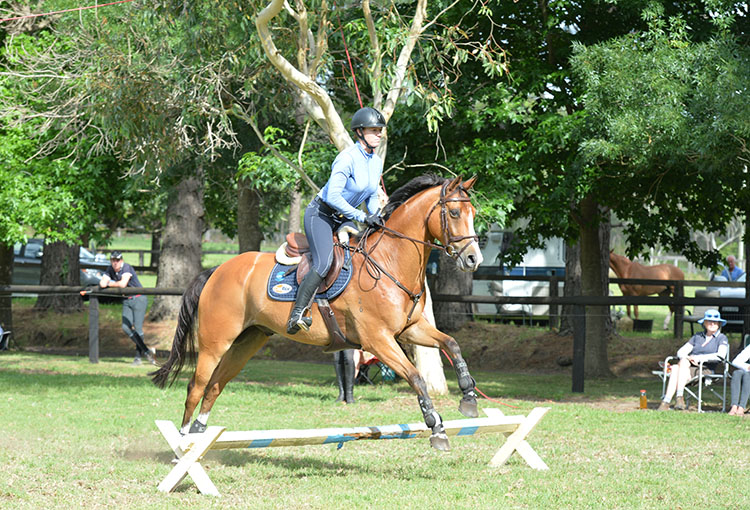
Tallara – stylish and correct
Dave Cameron is a more recent convert, and this time his partner, Tallara Barwick, is showing what a stylish and correct rider she is.
George Morris is the most quotable of trainers, and he leads with: ‘Riding is very simple, however, it is not easy…’
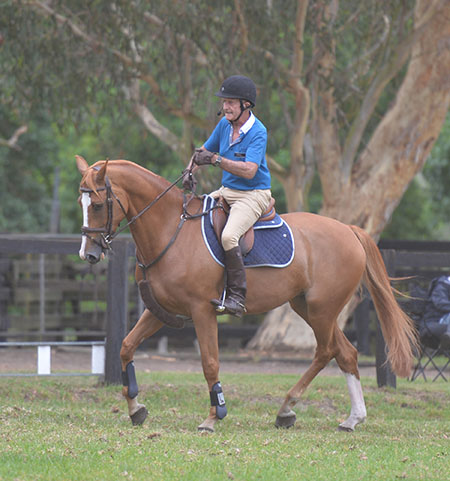
George and Gabi Kuna’s Flaire
George says that he has been encouraging his long time pupil and assistant, Chris Kappler to read the great nineteenth century German master, Waldemar Seunig, although he suspects that he, George, has got more out of the study course than Chris. And what is the message of Seunig? ‘Riding is a question of balance, riding a horse in balance.’
Sadly, George has one rider who’d best go un-named, who is the perfect example of the reverse, even in walk, he is in the back of his saddle, collapsing his weight onto the poor horse’s back:
“That is an example of excessive sitting back. There is so much weight in the seat that there is none left for the heels, which are our anchor to the horse. Sitting behind the horse jeopardizes leg contact, leg control. Modern riders have forgotten the lesson of weight distribution and as a consequence, balance has been forgotten.”
Tom McDermott demonstrates balance on Diamont
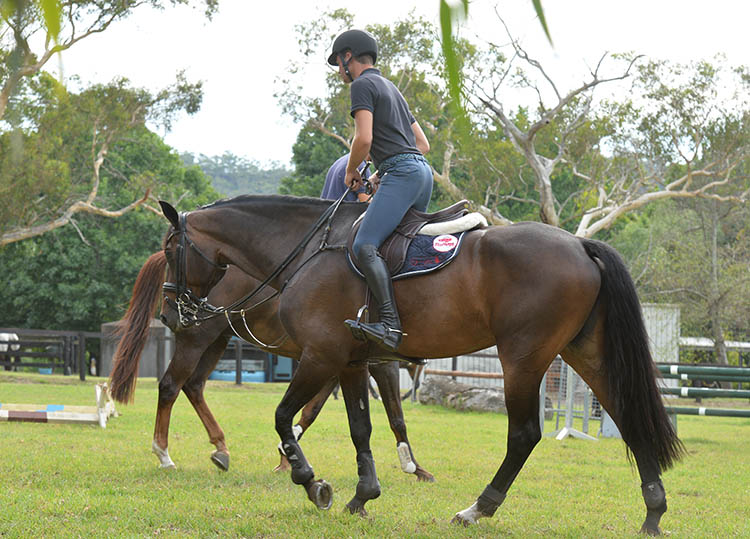
“Lean forward with your back slightly hollow, slightly out of the saddle with your weight in your heels, then sink back, don’t plop back, sink – the horse’s back is very fragile.”
From this point on, you notice the good students using this technique to re-adjust their balance every time they go into walk…
“What I am teaching is the light school of riding, the school exemplified by Bill Steinkraus. If you look at the jump off in Rio, then five of the six riders in the jump off – Peder Fredricson, Nick Skelton, Steve Guerdat, Kent Farrington, and the most forward of them all, Eric Lamaze – are from that light school.”
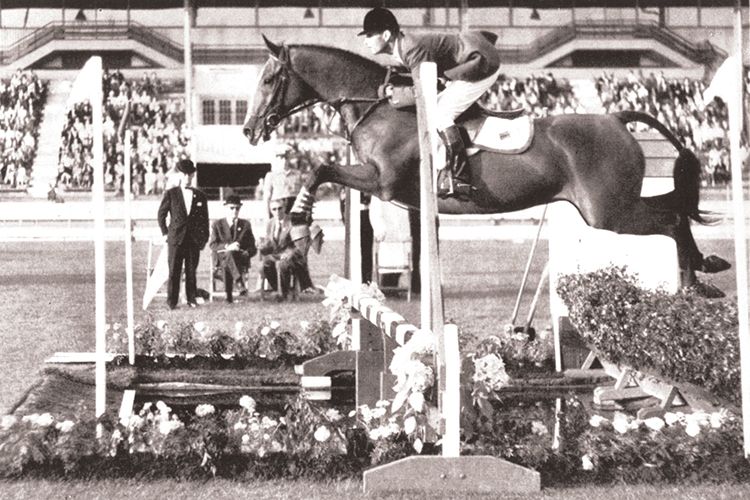
Bill Steinkraus – pioneer of the school of light riding
“The modern horse with lots of Thoroughbred doesn’t tolerate a backwards seat – that’s why race jockeys are so forward. The importance of a forward seat is not how far out of the saddle you are, but the forward inclination of your body to lighten the horse’s back. You can sink and sit deeper, but don’t sit back. Watch how light Nick Skelton rides, he always did, all of Ted Edgar’s students did.”
“Replace the word ‘sit’ with the word ‘sink’ – don’t sit back. Worry about heels down, not sit down.”
“If you think your heels are down – I want them further down. When the heel is down it engages the bicep muscle of your calf and you have a powerful grip.”
Poor Gabi Kuna kept committing the unforgivable sin of letting her stirrup slide from the position where the outside bar was slightly in front of the inside bar: “Fix the stirrup iron Gabi. It is driving me crazy, the outside bar should be closer to the toe. That stirrup has a life of its own. What keeps the stirrup in place? Weight in the heel. The stirrup slips and slides because she is not spending enough time out of the saddle.”
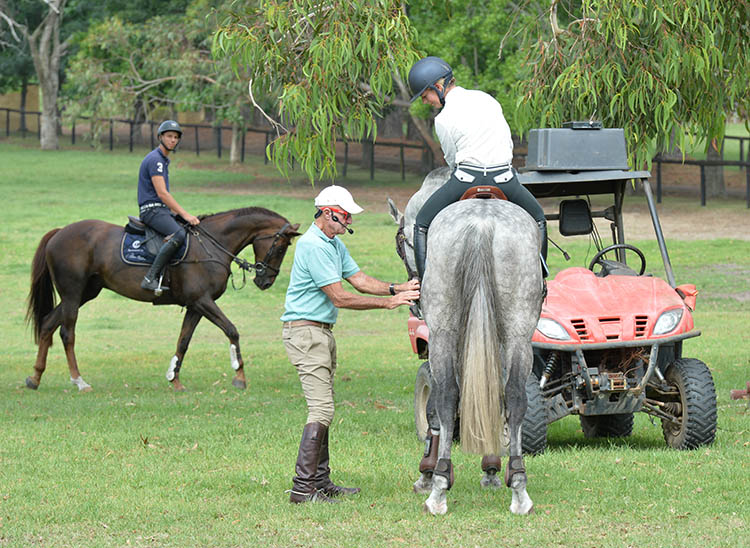
Gabi gets her stirrup position corrected
It’s not just about the seat, it is also about contact:
“Shorten your reins. Why? Because the quality of the contact depends on a straight line to the horse’s mouth. When you shorten the reins, raise and close your hands, it de-contracts the horse’s mouth. Some people like to use those white rubbery ‘happy’ bits – the problem is not the bit, it is the contact. I find with the happy mouth bits, the horses don’t respect them, they are always a little heavy.”
George is putting the theory into action, riding Dave Cameron’s mare, Conquista. The initial attempts to get the mare round look so ungainly, but George is not one to compromise:
“You see, I don’t lower my hands. I maintain a straight line, elbow to mouth and teach the horse when I raise my hands, she must lower her head. For the de-contraction to work the horse must keep going forward or all you are doing is slowing the horse down. When she softens and stretches, I soften and give.”
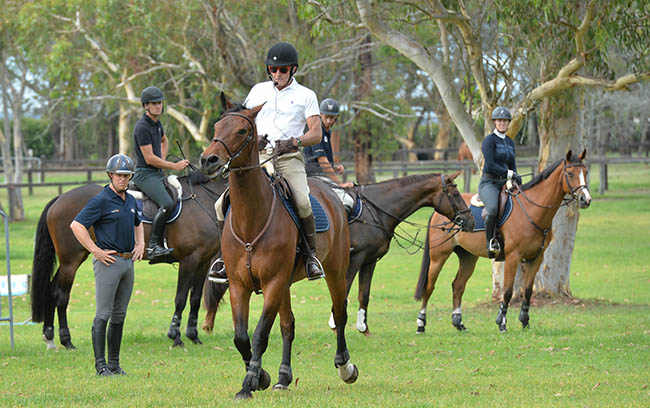
“An educated hand resists the horse’s mouth in exact proportion to the resistance of the horse’s mouth.”
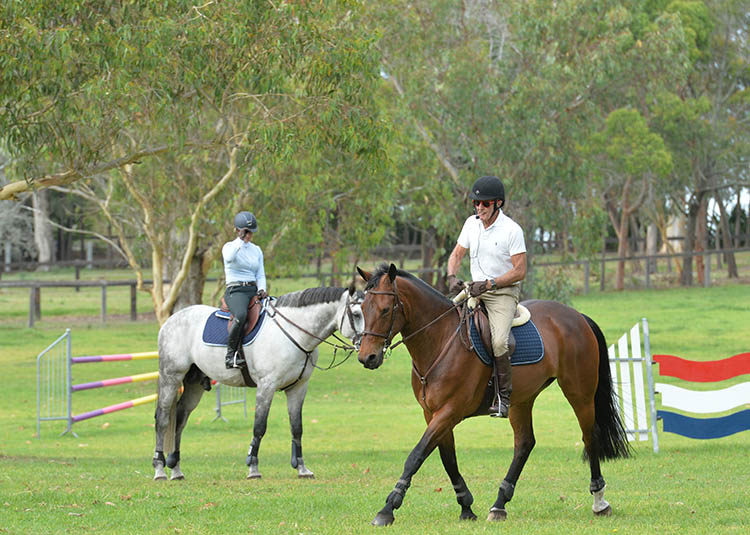
And yes she does, sort of. She certainly looks more interested in the world, it’s a reminder that when horses are ridden logically, their expression goes from dumb to attentive.
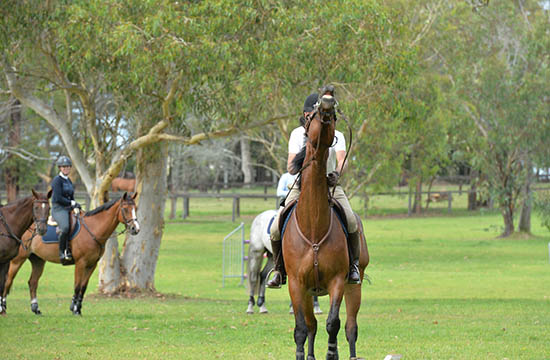
Conquista tries a few little leaps in the air, and George chuckles. “Oh no, don’t try that little trick! She has to accept my seat and hand. ACCEPT.”
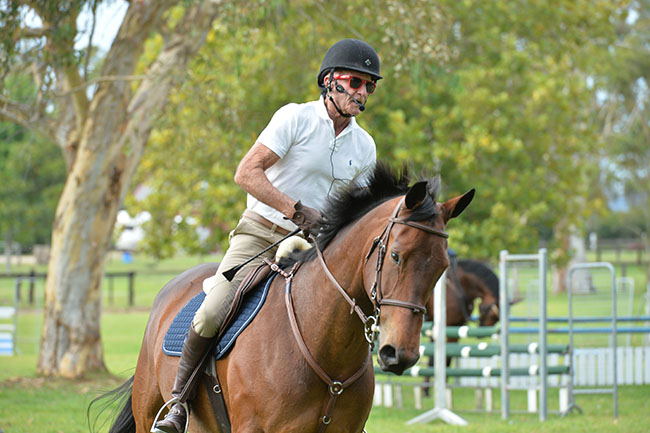
As always George’s training session begins with lateral work, shoulder fore, the first position, haunches fore, second position: “Supple your horse behind the saddle. You ride these horses that feel like boards.”
Seunig on Flying Changes:
There are many ‘recipes’ for making it easier to exercise the flying change of lead at the gallop. Transitions from one curved line tot another, serpentines, or the counter-gallop in which we suddenly shift controls once we have reached the corner – all provide an opportunity for acquainting the horse with the new phase sequence… We are in no hurry to exercise the flying change and begin it only when the horse lets us know that it is ready for it, think that the straight road is the safest and best in the truest sense of the word.
Riding the horse across the hall, we increase its collection at an active gallop, with careful even loading on all four legs, which may become a shoulder-fore position in certain circumstances. If we begin to use the reins to effect the shift at approximately the middle of the hall and then change the position of our legs, our seat controls will have completed the change before the new change points have been reached without our having to call upon the horse for an greater flexion, such as is required when changing from one circle to another. If we made any such call, there would always be the danger that the horse would learn the trick of throwing its weight about. This would not only interfere with the correct execution of the single flying change, but also result in insurmountable difficulties during later instruction in several successive changes of lead. Once this warped turning during the change of lead has become a habit, the greatest patience and a long period of time are required before we can correct this basic fault, which always results in a horse being over-bent and holding back… The rider’s change of seat must always occur in such a way that it is unnoticeable to a spectator. A mounted horse must convey the impression that horse and rider are cast in one piece and inspired by the same will.
– from Horsemanship: A comprehensive Book on Training the Horse and Its Rider by Waldemar Seunig
Like Seunig, George wants his changes straight. “I hate this habit of pulling the front of the horse in the flying change – make the changes with your legs. Straightness is a virtue, if the horse is not straight it doesn’t have to work, it doesn’t have to collect. Make the horse straight with a bend round the inside leg, make the horse straight with shoulder fore.”
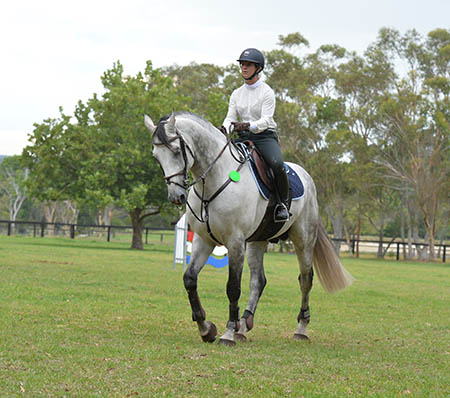
“Make the horse straight with shoulder fore,” – Gabi and Cera Cassiago
“Calm, forward, straight. You can’t make a horse straight, that is not forward. When the horse is straight, the flying changes comes easily.”
more follows
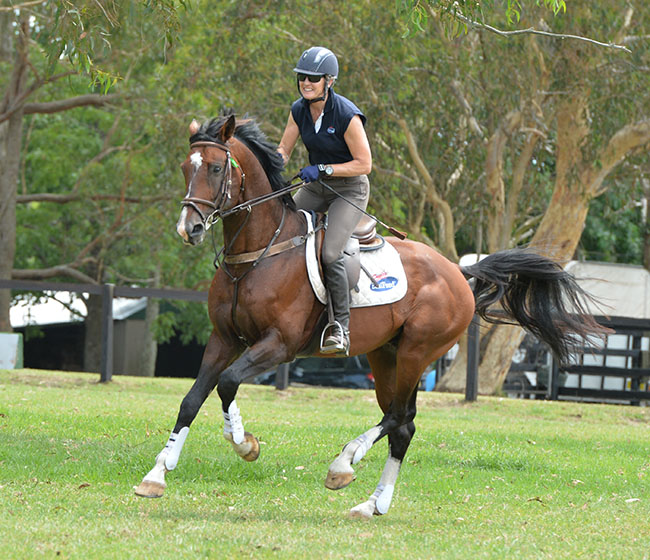
All power – the Cassall son, Dynamite Bay, and Vicki Roycroft
“I hate these horses that are light in the croup, they kick up behind or swish their tail in the change – it’s a resistance to the legs and seat, a very serious resistance to the driving aids. You see it in dressage, horses that win medals that swish their tails in the changes, they shouldn’t get a mark over 6, tail swishing is a serious resistance to the legs.”
“Rider have such a habit of pulling on the inside rein in the change, that’s why the horses get very light behind, and very short in the change.”
“After the change turn in the opposite direction, in counter canter. I love that exercise, it fixes the horse with a crooked change, quickly.”
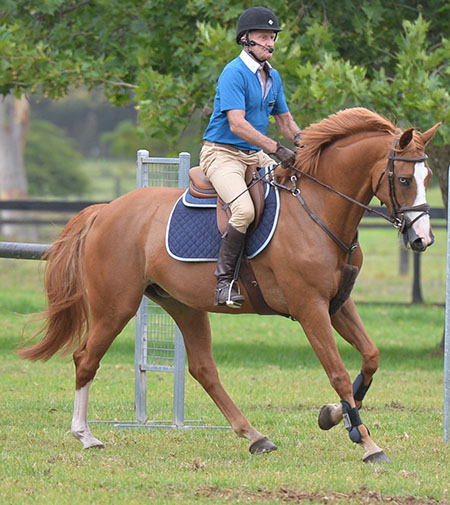
“When I train flying changes initially, I sit very deep so he doesn’t learn to toss me out of the saddle.”
Seunig on the jumping seat:
Nowadays we have overcome the obsession that we must help the horse to surmount obstacles by applying various active ‘controls’ and that we can help it maintain a wrongly understood balance by employing rein and weight controls. These controls are even more problematical, since all they do is place a disturbing load on the horse’s hindquarters and prevent its neck from acting as a balancing rod. The best assistance we can render a horse in jumping will always be to enable it to surmount obstacles suitably, but the only way in which we can do this is by means of our quiet, adapting, relieving jumping seat..
– from Horsemanship: A comprehensive Book on Training the Horse and Its Rider by Waldemar Seunig
“We should read the old books because competition breeds a lot of false information. It breeds artificiality, it breeds exaggeration. That is why we love Beezie (Madden) because she is very simple. When she rides it looks very easy and very classical.”
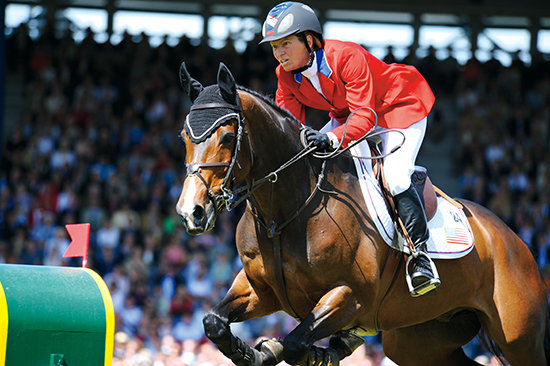
When she rides it looks easy… Beezie Madden and Authentic
“Today is the time of the cheap read, read the old books — How to Groom a Horse. In the next generation that knowledge will be extinct. We will have lost the horse care, the stable management, I love the old, simple, good horse management that proceeds riding. Then you can’t ever learn enough dressage and that precedes jumping, and it all meshes together. It’s what Charlotte (Dujardin), Michi (Jung) and Nick (Skelton) are, they all meticulous, detailed horsemen – it’s all detail, all detail. In modern jumping circles, 10% are interested in dressage – the rest are just fascinated by gadgets.”
“Watch Nick Skelton jump a horse, no one has ever jumped a horse better, and the jump is always natural, not artificial.
“Grow tall, don’t slouch, but relax and stretch your spine, and slightly raise your hand, that drives the horse under behind.”
Of course, every transition had to be perfect:
“Sink, stretch, inside leg, outside rein, and stop. That’s a mantra for every downward transition. Every downward transition perfects the half halt. You don’t have to have a driving leg for the downward transition, you need a sustaining leg.”
“Once your horse is at the desired pace, your legs are passive on his side. You don’t need as much leg to lengthen the stride as you do to shorten the stride.”
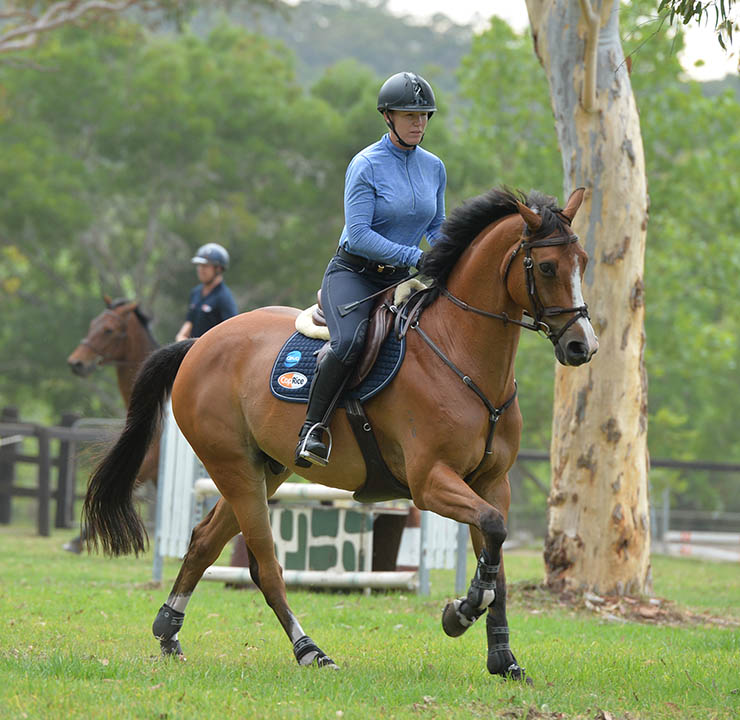
Tallara Barwick at the desired pace
The Swiss star, Thomas Fuchs comments in George’s autobiography that he was puzzled because George was always cantering his horse on the ‘wrong’ leg, when he became a pupil, Thomas like all the others, found he too was spending a lot of time on the ‘wrong’ leg.
“One of the beauties of canter work is teaching collected canter. The only purpose of counter canter is to collect the canter, to shorten the horse’s back.”
Seunig on counter canter
“The counter canter becomes especially valuable when the horse’s shoulders are carefully guided, the forehand always being turned towards the wall ahead of the inside hind foot. The inside hind leg near the wall can be better controlled and supervised in the false gallop than in the corresponding simple gallop. This will naturally have a favourable effect on the activity of the outside hind foot and thus improve the horse’s entire posture.”
– from Horsemanship: A comprehensive Book on Training the Horse and Its Rider by Waldemar Seunig
Back to trot and the cavalettis come into play. “When you ride through the cavalettis you regulate the impulsion and straightness with your hand, and you learn contact.”
George Morris doesn’t just teach with his voice, he has an extraordinary ability to construct fences and combinations of fences that teach the horse, each fence had been placed with an accuracy of millimetres, and woe betide the course assistant who didn’t get it right.
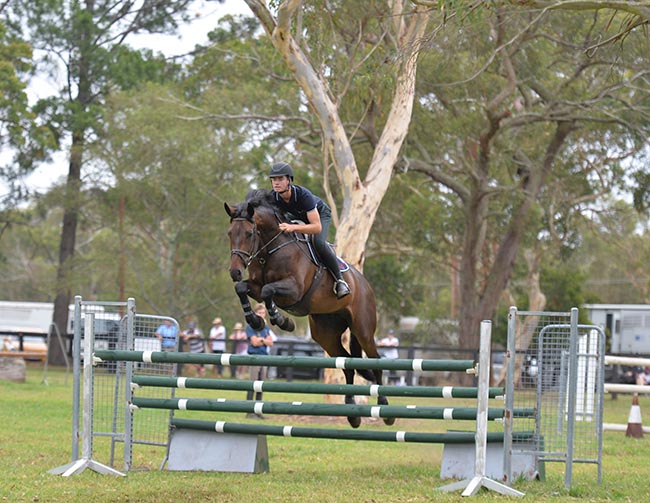
Tom with Diamont over the triple bar, she’s learning to be clever…
“We have a triple bar, six to a vertical, six to a plank, and two to an oxer. The second fence teaches the horse to be clever, it is very instructive to the horse. Let him hit, don’t make him hit, let him hit. The best teacher of the horse is the horse – he is his own best trainer. If a horse raps, never lose your temper or use a lot of leg or spur, rapping the fence is enough punishment for the horse.”
Now George is prepared to allow the rider to get back, but only if the horse needs it. “Perhaps the first time over a new jump, get behind, that makes for a stronger position. There are four seats: dressage – deep and upright; riding seat, two or three holes shorter; jumping seat – which goes up a hole for every extra foot in height; racing seat, the most forward of them all.”
It must be said at this point that I am puzzled by Tom McDermott and his recently acquired Diamont (the imported Selle Français mare, previously owned by Savannah Hopkins). To my mind, the horse is in an awful, jammed up in front frame, but Tom as always sits so elegantly and effectively, and uses his legs and body correctly, and George says ‘Good Tom.’
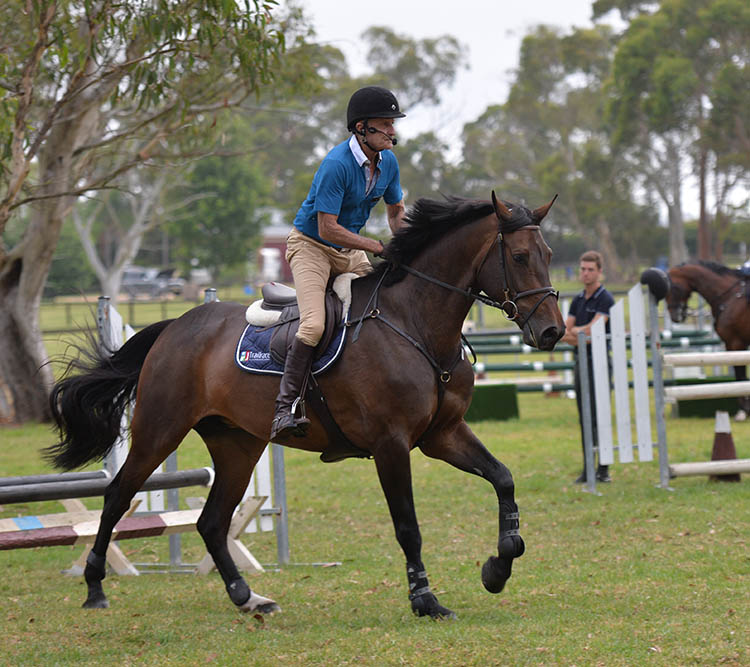
Next day, George answers the question. He will ride Diamont, “another U-necked one”, but George quickly sets about lengthening the mare’s frame. He has had the double bridle removed and is riding the mare in a snaffle. Suddenly the outline has changed, George hands her back to Tom – “tell me if you can feel the difference.” “I can.” Point made.
George moves on to his second group of riders but to tell the truth, a fair number of them have already ridden in the first group.
Gabi is riding a beautiful Dutch mare, Flaire – George likes her, but wants Gabi to “push her to the verticals, get her a bit quicker over the jump.”
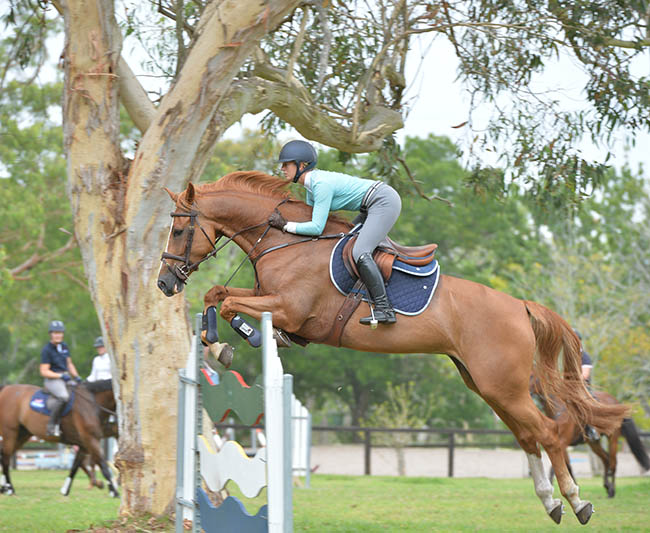
And Amanda Madigan is riding the Diamond B stallion, Baluga, George says: “He gets so high over the triple, that makes me hold my breath. Do you get in trouble with him hanging up?”
“Yes.”
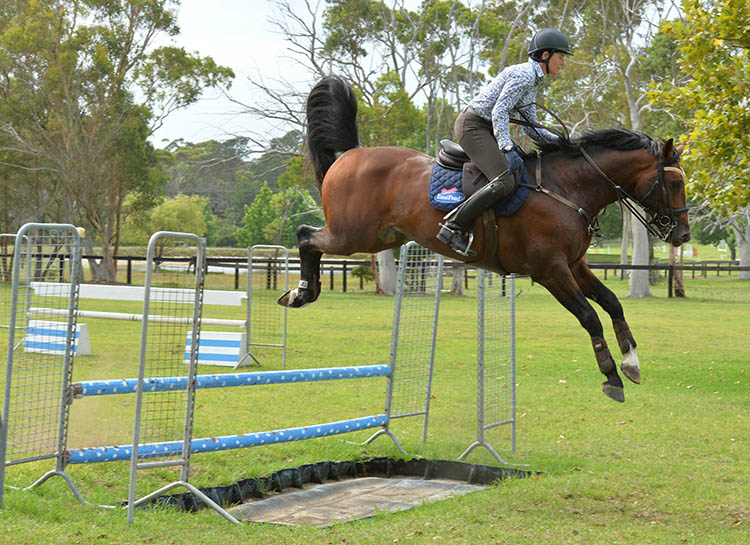
“Just rest your stick on him.”
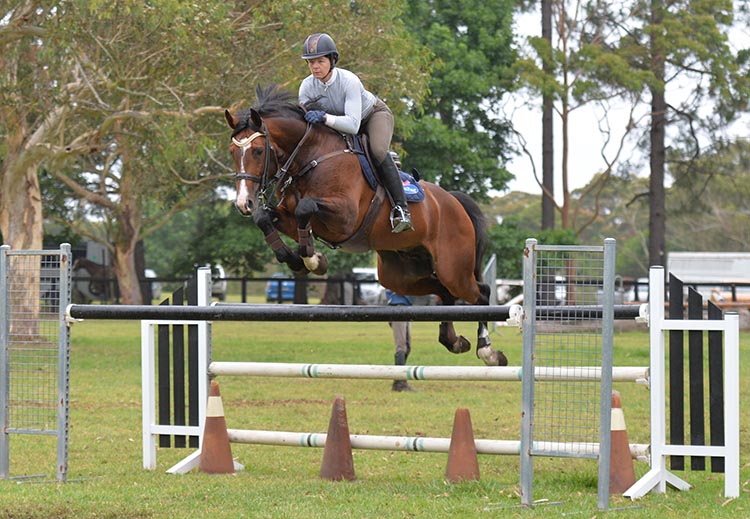
“The stick can get that confidence in a horse.”
“At the first fence just rest your stick on him. The great master of the whip is Ian Millar. He uses the whip liberally in competition, and he gets a better, more forward jump. The stick can get that confidence in a horse – it’s not just about training – it’s about winning.”
And Tom is warned not to take too much notice of the riding he will see in his new home in Wellington, Florida:
“Tom don’t fall into the trap of riding de jour which you will see all the time in Wellington. You are better than that – remember LEG RIDDEN, that’s the lesson of today. The fashion in riding today is not good – hand riding, the horses are broken in the neck, the highest point is the third vertebrae, not the poll. They are so obsessed with ‘the look’ – look at the horse’s legs and back, don’t get obsessed with pulling the horse’s head down.”
“Jumping riders with their gimmicks are very proud of their ‘dressage’ when it is not dressage at all.”
“There was a steward handing out yellow cards to jumper riders for Rolkur. That is to be applauded, Rolkur is so wrong. The horse’s neck is a reflection of the hind leg.”
“I was so happy for Peder Fredricson, the silver medallist at Rio. I talked to him the other day, he doesn’t use draw reins, he works his horse in a snaffle, and works from behind to the front. I said to him, you must use this time to use your success to influence other riders.”
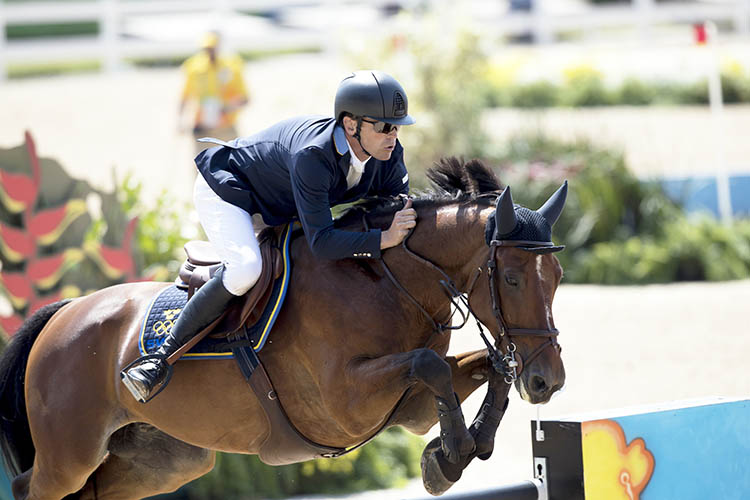
Peder Fredricson and All In, silver at Rio, and an example to the world…
“In my day, Bert de Nemethy insisted it was 70% training at home, 30% at the show. Now it is all rankings points and prize money not schooling. If it had been like that for me, I would have been very unhappy.”
The next exercise starts with the group popping over a cavaletti before they halt in front of the little vertical.
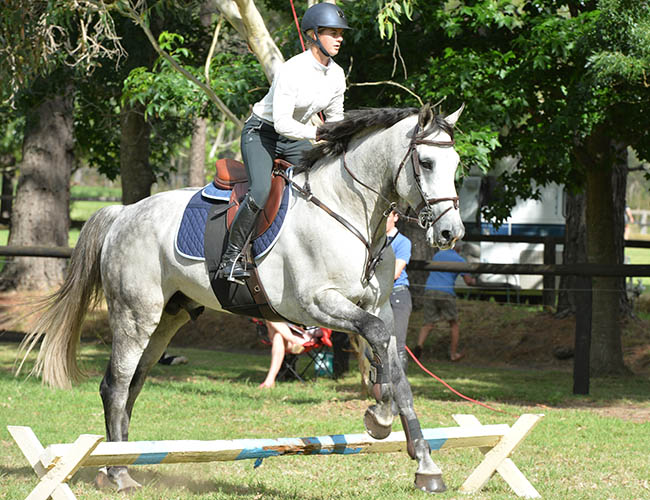
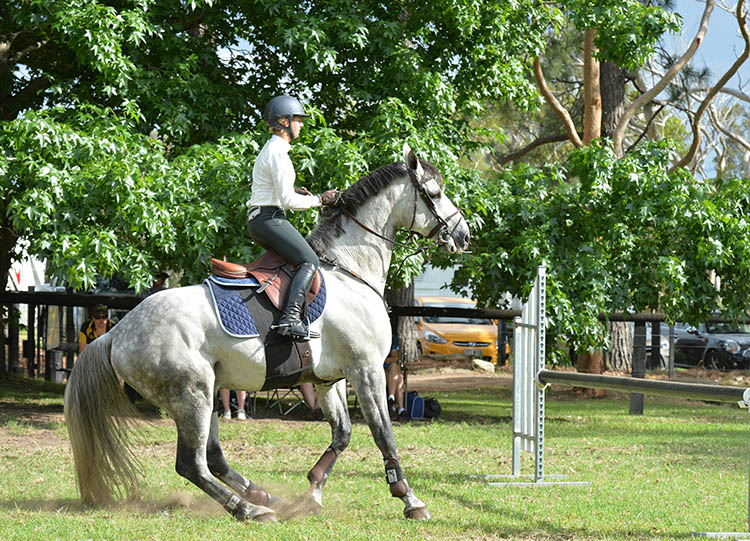
Gabi and Cassiago
“What’s important in this exercise is that the horse listens to the hands and in the halt, they raise the forehand and get off the shoulders.”
Next they had to halt the horse after the second fence: “This quickly educates the horse to the half halt. I don’t care where the horse’s head goes, I do care that he comes off the forehand. And when you halt, halt STRAIGHT.”
“Keep the horse straight and let him learn to back off himself. You don’t want to use so much hand that the horse doesn’t learn to use his own initiative. Keep them straight with your hands but don’t help them with your hands. Once I am sure I’ve nailed the stride, I soften and give, I let the horse used its initiative.”
Halt in front of a fence, is very very different from turning off in front of a fence: “Don’t pull off a fence. When you head to a fence you either go over, under, or through. There are only rare exceptions.”
Now George has the riders going from halt straight – no warm up – to the Swedish Oxer: “I use this to test the horse is in front of my legs. I don’t care if he twists or hangs, as long as he is brave, confident and careful. The most important thing in this system is that the horse does it for us. Look at Valegro on the last day at Rio, it looked as if the horse did it without the rider.”
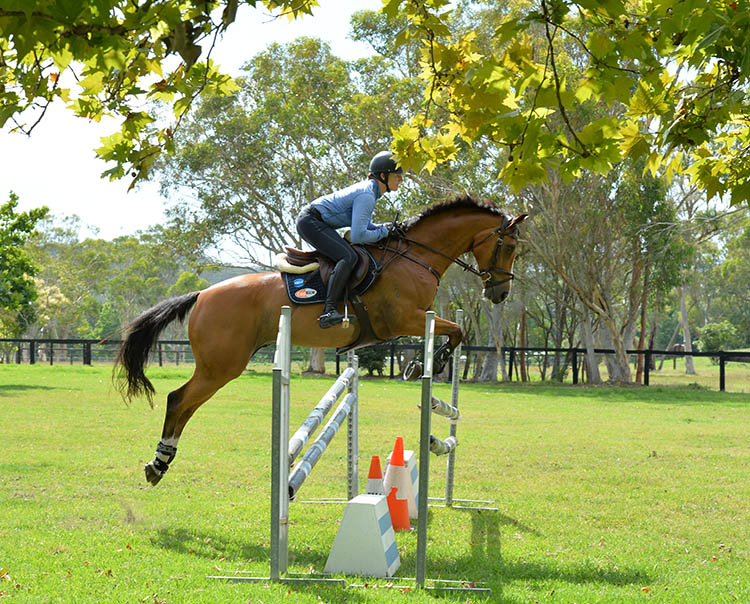
Tallara goes straight over the Swedish Oxer
“These are very good students. What is important at a clinic is that you get inside the clinician’s brain. What’s Carl (Hester) thinking? What’s Ludger (Beerbaum) thinking? Even if you learn what you don’t want to do, that’s what I often get out of a day watching at Wellington, it’s instructive because you have discarded that approach.”
“I was lucky I had very good teachers, trainers that were ahead of the world. I was inducted from the get go into the importance of flatwork, dressage. When I started, all the riders were curious about dressage – now they think they do dressage, but they don’t, their horses are short in front, and out behind.”
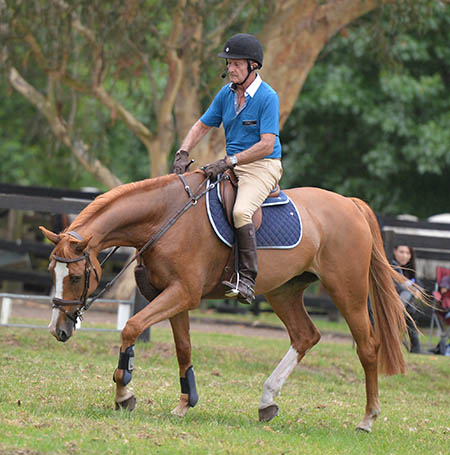
“As I grew older, I became more aware of the basic principles of dressage, and the first is soundness. In my country we have vets at the stables 24/7 – it’s a red flag, it tells you something is wrong. Why is the horse limping? Because it is not worked correctly.
You need dressage for soundness, to build muscle, to get the horse carrying the weight on its hind legs – then you have less vet problems.”
The great thing about George Morris is that he never for one second forgets that it is not about money, or ego, or the rider’s vanity – it is a system that is based around the understanding and appreciation of that unique four-legged creature that lets it all happen – the horse.
George muses on various things, starting with courses built by Aachen course builder, Frank Rothenberger:
I n the clinic you were talking about training the horses to handle Frank Rothenberger and his trademark triple:
“Like all course builders, Frank has several trademarks – one of his is the triple. I’ve seen him at shows like Aachen and Falsterbo use this particular triple very often, he had it in the Europeans. The triple bar at A, two strides, 35 feet, oxer, wide, to a normal but a little bit short vertical. Or he’ll have the triple bar two strides to the vertical, then the oxer, but the triple bar always comes in first.”
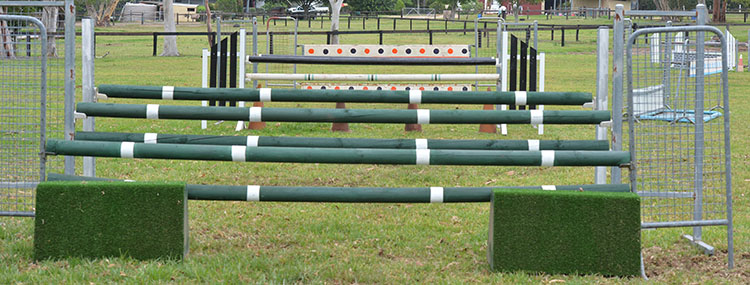
Frank’s triple combination as the horse first sees it – Mt White version designed by George.
“Funnily enough, when I jumped in Rome in 1960, the triple was the same: triple bar, puissance wall type fence, to an oxer, but it was an unjumpable distance as well, one and a half strides – even Winkler pulled out! You didn’t know until you were inside whether you were going to push for one or hold for two, and lots of horses fell.”
“If you have triple bar, oxer, vertical, then the triple bar and the oxer gets them going forward and a little flat, then they see the vertical at C, which is a little tight and they cut down on B. In all of Frank’s courses, that was always the difficult fence, the back rail of B. If you have triple bar, vertical, oxer, then if you come in too strong to the triple bar, the vertical gets flat, or if you come a little more conservatively to the triple bar, then you take the risk that the oxer can get very scopey. So there are all kinds of possibilities when you start mixing those three jumps up.”
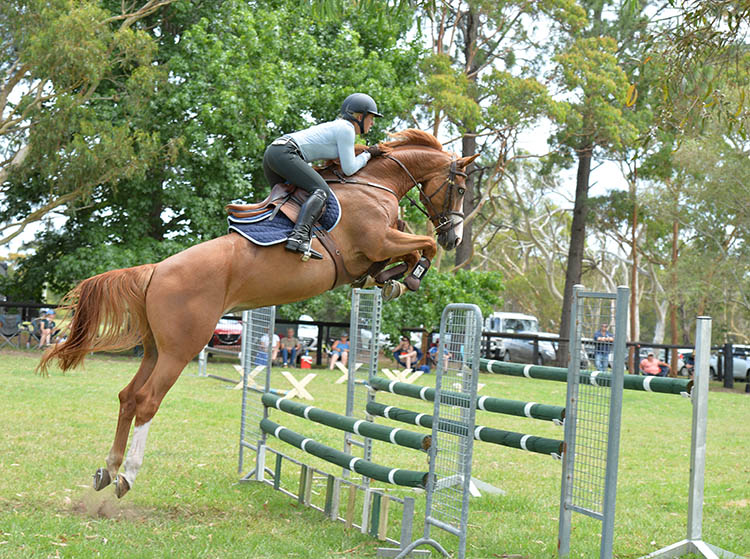
Triple Bar
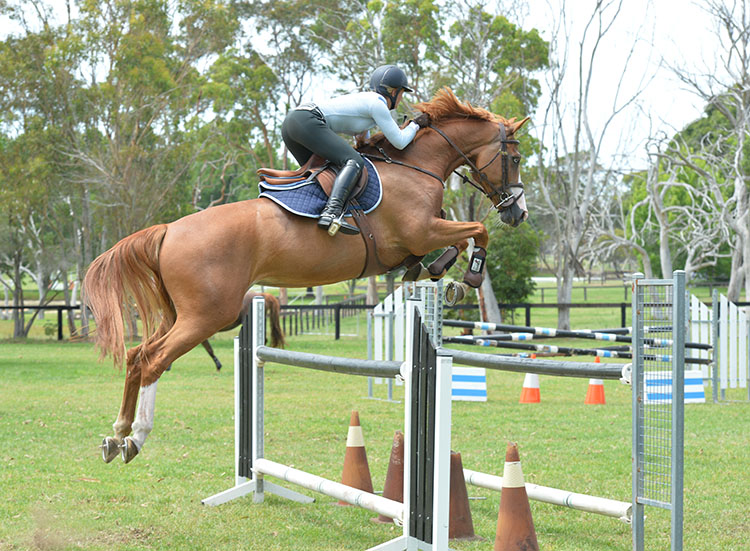
Oxer
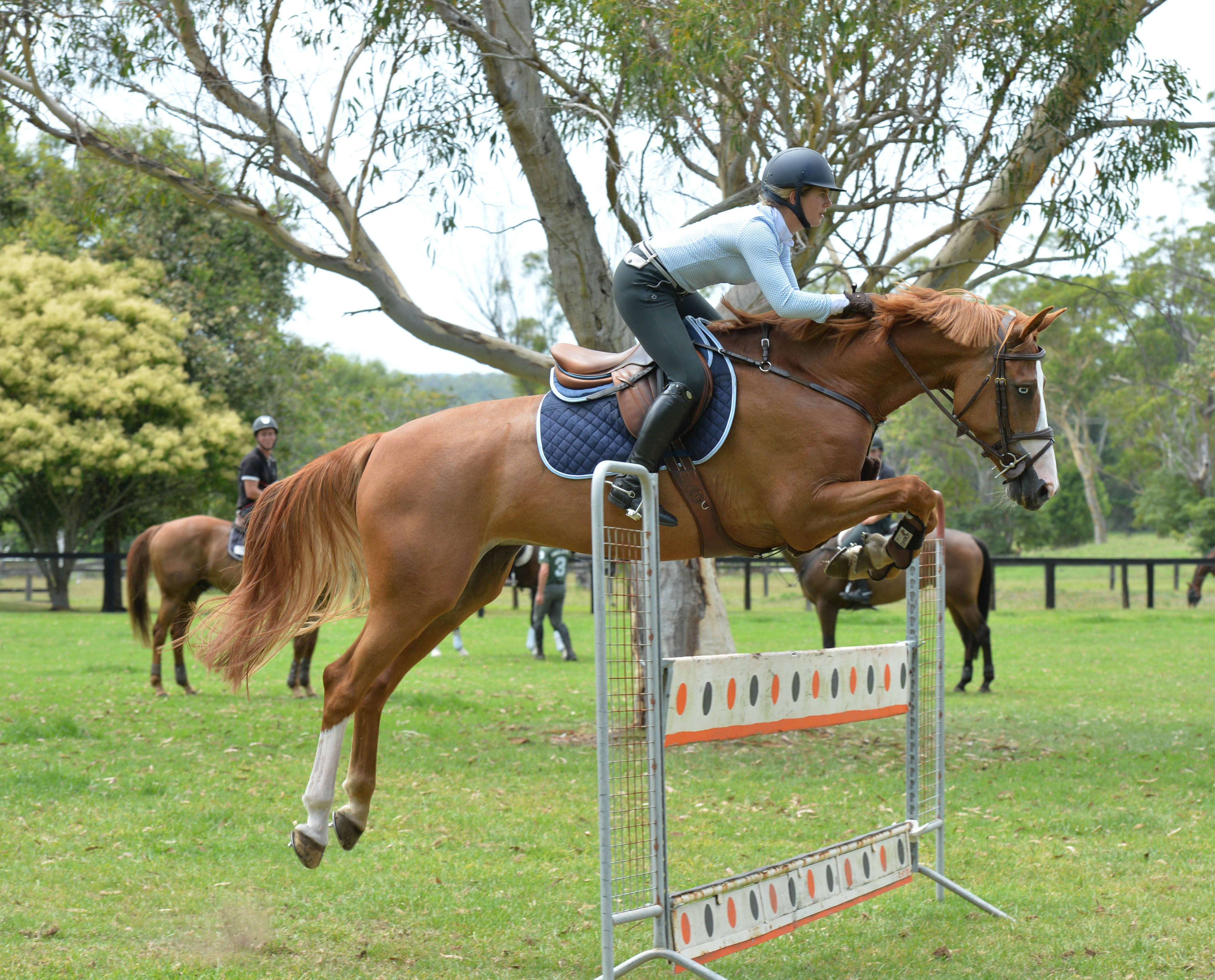
Vertical
You suggested the riders set that combination up at home, and let the horse work it out…
“Yes. One year in the Nations Cup at Aachen, it was very very big – triple bar, oxer, vertical, it was the biggest I’ve seen at Aachen. Then you saw the horses that had been schooled over that combination, and the ones that weren’t.”
next George discusses light seat riding
Breeding jumpers? Go to http://www.ihb.com.au and find the best available European stallions, right here in Australia. Stallions like Chaccoon Blue
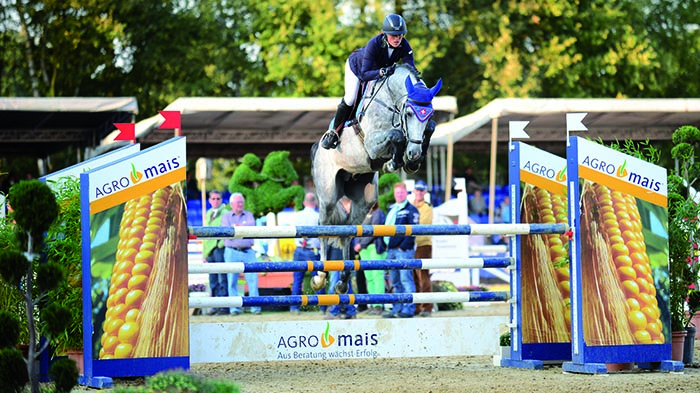
Light seat riding
It was interesting that you said five out of the six in jumpoff at Rio were forward seat riders, who was the odd man out?
“The Quatari rides well, very well, but his methodology is to be behind the movement of the horse. I’m not saying it’s wrong, it is a different methodology.”
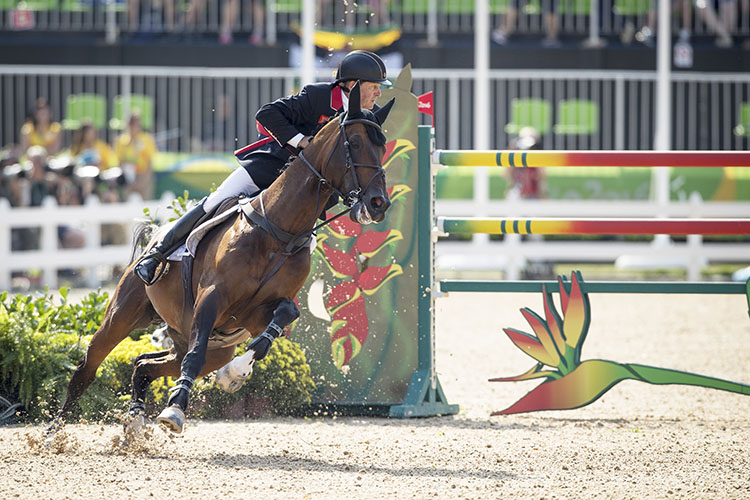
Nick Skelton riding to Gold at Rio
But it is wrong isn’t it? Wrong for a number of reasons mostly relating to the horse…
“In principle it is not as smooth and easy for the horse. That’s why so many people over the past century have adopted the forward seat. You have to prepare the horse and school it in your dressage seat, but when you shorten your stirrups, you still have that dressage in your horse, but you are riding in a very different seat. Your stirrups are short, your leg is a little braced forward, you are out of the saddle – it is a racing seat. Jumping and racing are very close together.”
Stirrup position follows
Another sire available from International Horse Breeders is Cinsey. Go to http://www.ihb.com.au and see the bloodlines he carries, and many more of the best available European stallions, right here in Australia.
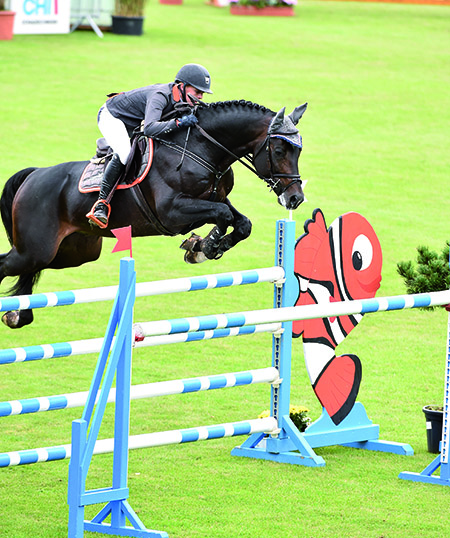
George and the dreaded stirrup position
Why is it so important that the outside branch of the stirrup is further forward than the inside branch?
“I was taught that by Bert de Nemethy. It is written in the German manual of riding that the stirrup iron should be at right angles to the girth, so it obviously has a good mechanical reason, it is also aesthetically attractive, and it supplies better flexibility, it again is opposition – like inside leg to outside rein – and opposition gives balance. So with that diagonal, the balance is better, the support is better, the flexibility is better. I can’t look at a rider if the stirrup is not placed correctly. It hits me quick! It’s about the first thing I see.”
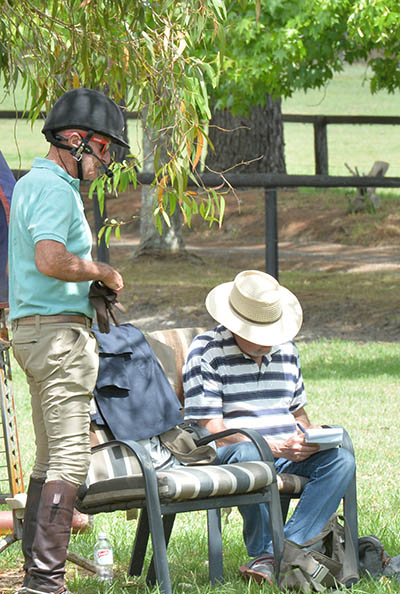
It could go on, as long as you keep asking the questions, the wisdom flows – George Morris, we salute you and look forward to celebrating many more of your birthdays…
Breeding world class show jumpers? Consider Diarado, he’s available in Australia from International Horse Breeders. For information on all the stallions: www.ihb.com.au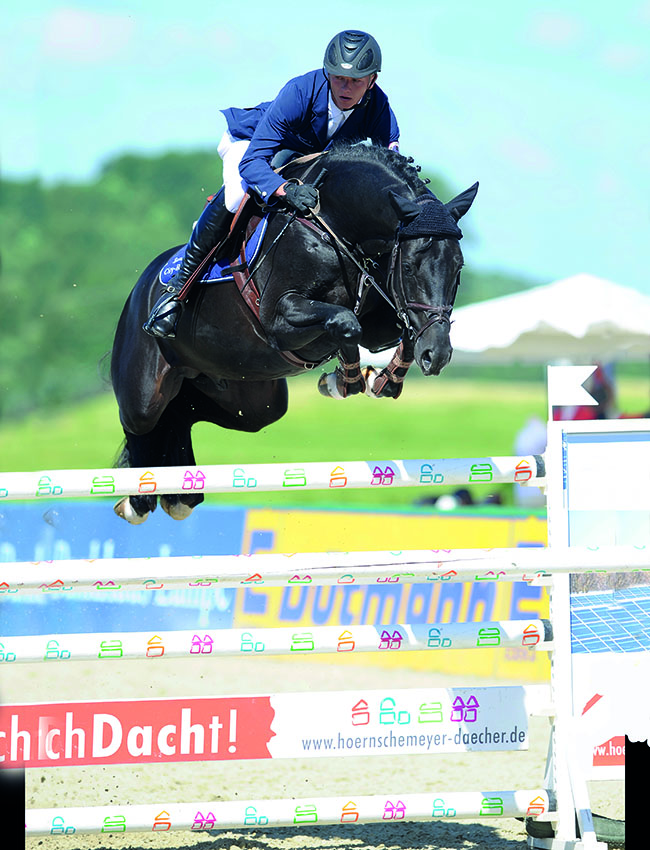

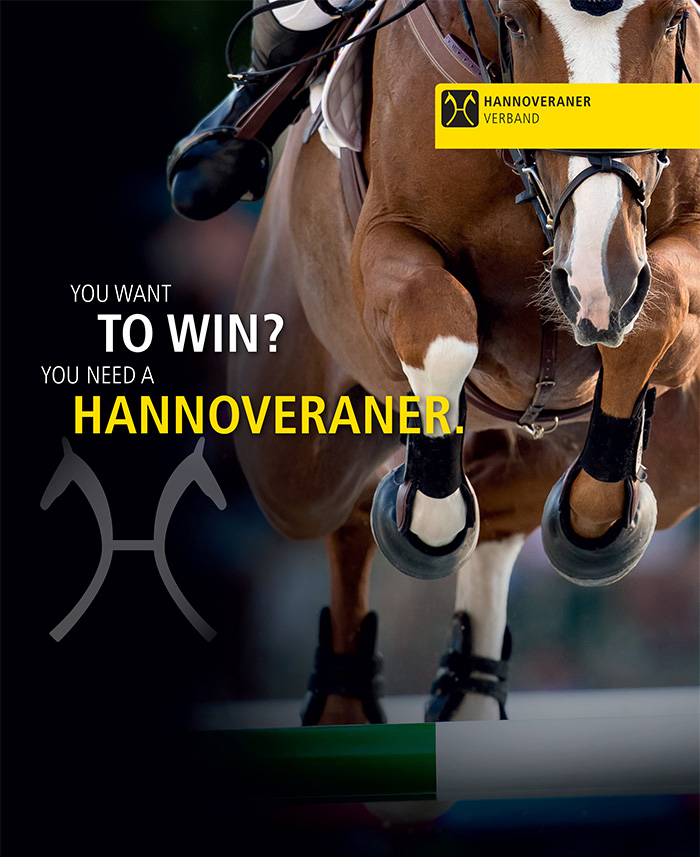
Thank you Chris and Roz for taking the time to interview George again. Yes he can always come out with some lines that help you appreciate how to work and ride .